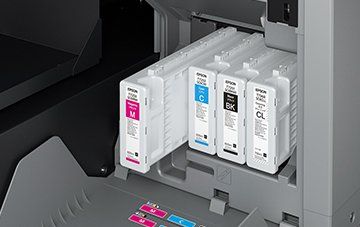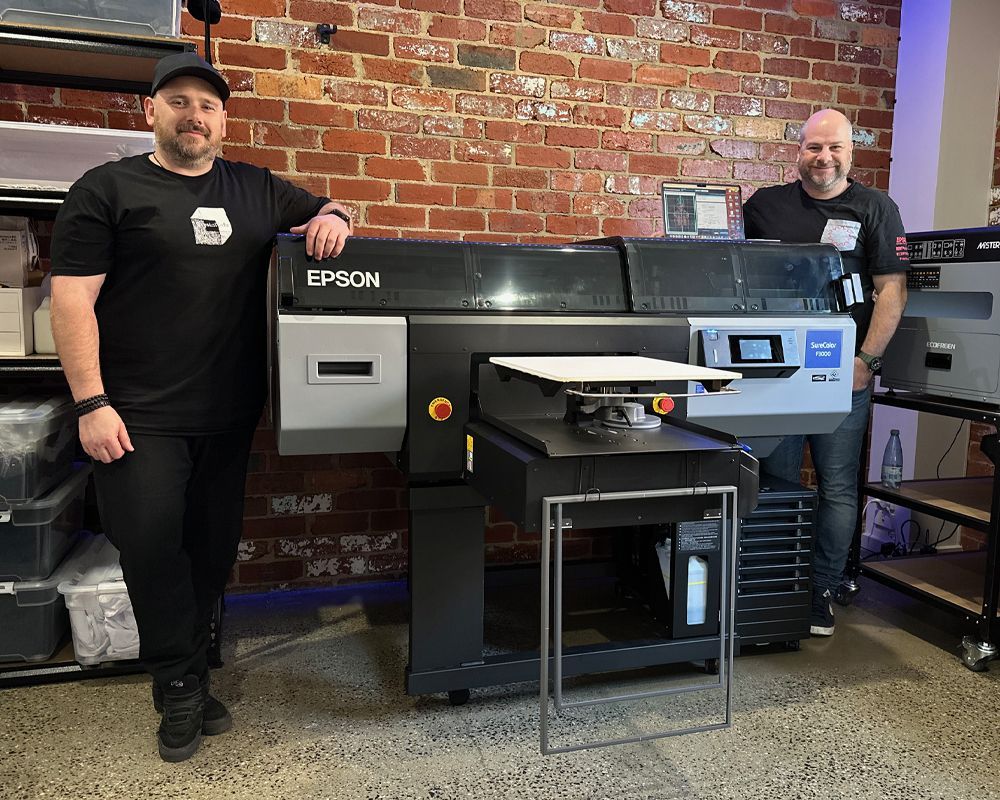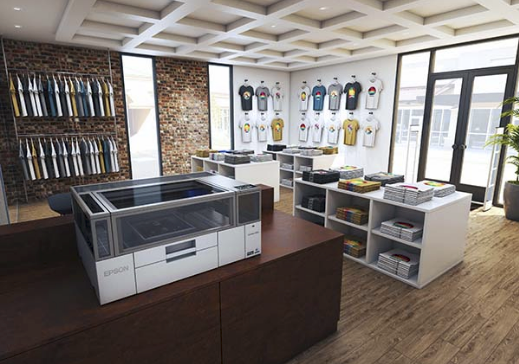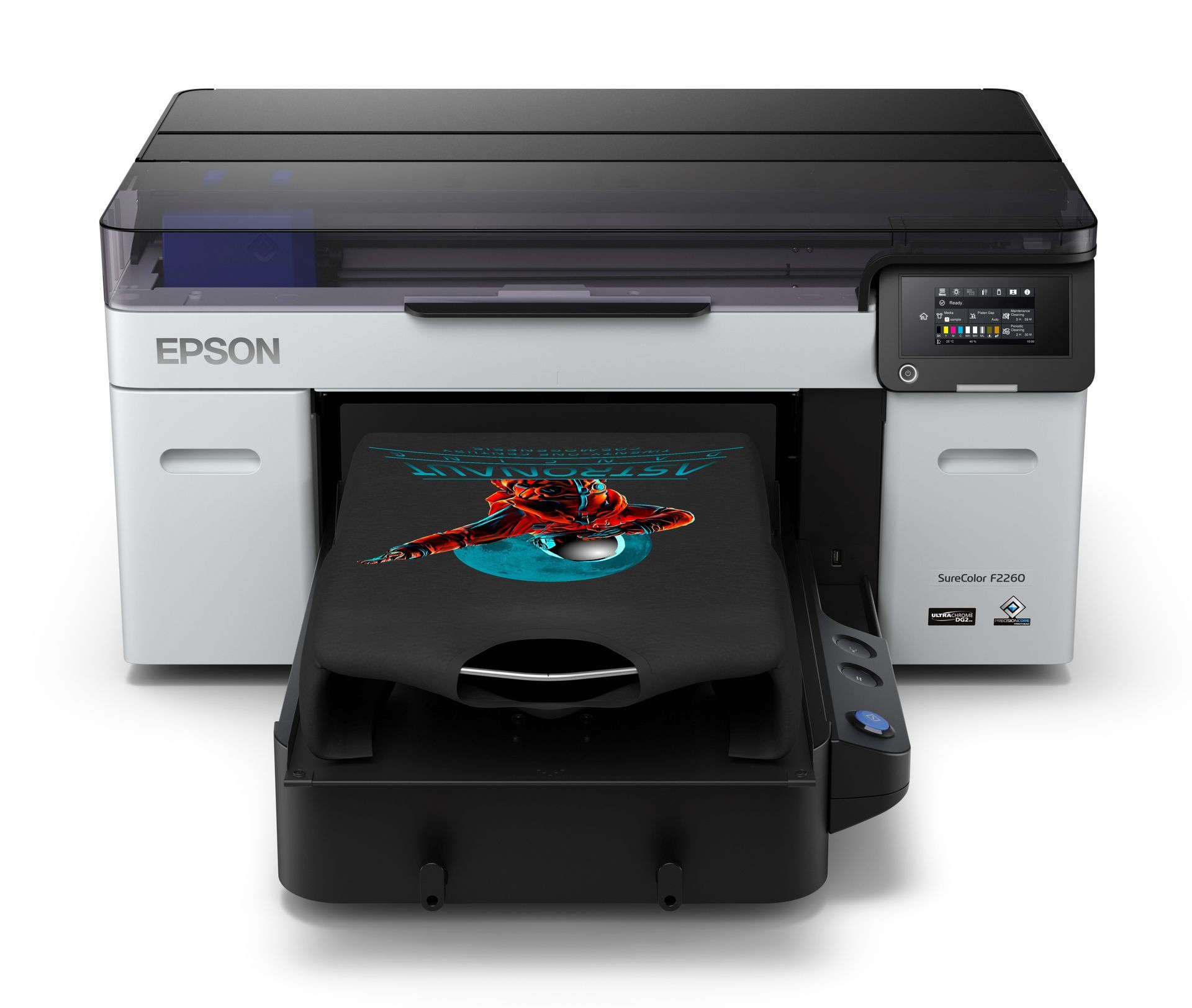December 3, 2019
There’s a lot of conflicting information out there. Some sources tell us to order a new set of ink as soon as a cartridge is placed in the printer to ensure that you have some on hand when your supply inevitably begins to run low again. Others tell us not to order ink until the printer notifies us that it’s running low to ensure that spare cartridges don’t inadvertently become expired.

So what is the correct advice to follow? If you run an Epson SureColor F2160 (or F2000), having spare ink and cleaning cartridges on the shelf is always the way to go. And there is no risk of it expiring thanks to the long shelf life of Epson DG UltraChrome inks.
What is an expiry date?
An expiry date is a date that manufacturers place on ink cartridges to tell us how long the ink will work as it’s intended. This means that all of the ingredients and chemicals in the ink will flow correctly through your printer’s tubes, filters and printheads. The ink will also do the job it’s intended to do once it hits the substrate.
Why shouldn’t I ignore expiry dates?
Using ink that has passed it’s expiry can cause countless problems with your DTG printer. Some of these problems may not be immediately evident, but your printer could sustain internal damage that may impact its performance in the future. An ingredient that is added to help the ink flow through the printhead, for example, could separate from the solution and cause particles to start building up inside it. Once the buildup is great enough, it will eventually cause your printhead to fail.
Beyond the problems caused with your printer, using ink that has passed it’s expiry can also result in issues with your prints. Some of the pigment may disappear from the solution, for example, causing variations in colour to occur. Your prints won’t turn out as expected, which can result in some very unhappy clients.
It’s also crucial to note that, in most cases, using expired ink in your machine will void your manufacturer’s warranty.
Why keep ink on the shelf then?
Whilst using expired ink can be hugely detrimental to your printer, letting the ink cartridges run completely dry can be even more so. Your printer requires ink in the lines to keep everything running smoothly and prevent damage to its fragile parts, like the printhead. Letting the ink run down completely and then not replacing it immediately can cause whatever solution remains in the tubes, filters and printhead to dry, which leads to all sorts of problems when you try to start up your machine again.
Plus, if you’re in the middle of a job, you’ll be forced to cease printing until you’re able to have some new cartridges delivered. We regularly receive calls from customers needing ink as soon as possible because their printer has run out and they have jobs to complete. This can be extra stressful for them if they have missed postal cutoff times or if their ink has run out on a Friday.
By keeping a spare set of cartridges on the shelf, you will be prepared for times when your printer runs low on ink. This also decreases the possibility of disruptions to your workflow, particularly during the Christmas period when many suppliers are closed or in the case of a natural disaster (such as bushfires and floods) when you may not have access to ink as quickly as usual.
But what about the expiry date?
The great thing about Epson DTG inks is that they have a fairly long shelf life. From the time of manufacture to the time of expiry, you can expect a usable period of around 22 months. When you consider that most users who are regularly printing go through 2 white ink cartridges
every 3 months or so, you can see that you have ample time to use the ink before it expires.
Whilst most users, even those who are printing regularly, take a little longer to go through CMYK
(around 6 months or so), the almost 2 year shelf life of the cartridges ensures that you have adequate time to use the ink before it expires.
Cleaning cartridges
have an even better shelf life - they’ll be good for 5 years from the date of manufacture. There is no reason not to have 2 spare cartridges sitting on the shelf at all times - enough to flush the white ink lines if needed.
What is our recommendation?
In a perfect world, Machines Plus and Epson would recommend that you purchase new cartridges whenever you place your spare ones in your printer.
We understand, however, that cashflow and the regularity with which you print can play a major role in the way people purchase. If either of these are of concern to you, we would recommend buying spare cartridges when the ones in your machine are around halfway used. The longer you wait to purchase new cartridges, the higher the risk that your printer will run out of ink completely before you receive them.
Share
Tweet
Share
Mail

By Kristina Wood
•
May 7, 2024
Did you know that out of the 20 Epson SC-F3000 models in Australia, Machines Plus has installed a whopping 9 of them? We're not just about recommending equipment; we're all about providing tailored solutions to meet all your direct-to-garment and printed merchandise needs!
© 2021 COPYRIGHT MACHINES PLUS | Terms and Conditions | Privacy Policy | Returns Policy | Service Agreement



